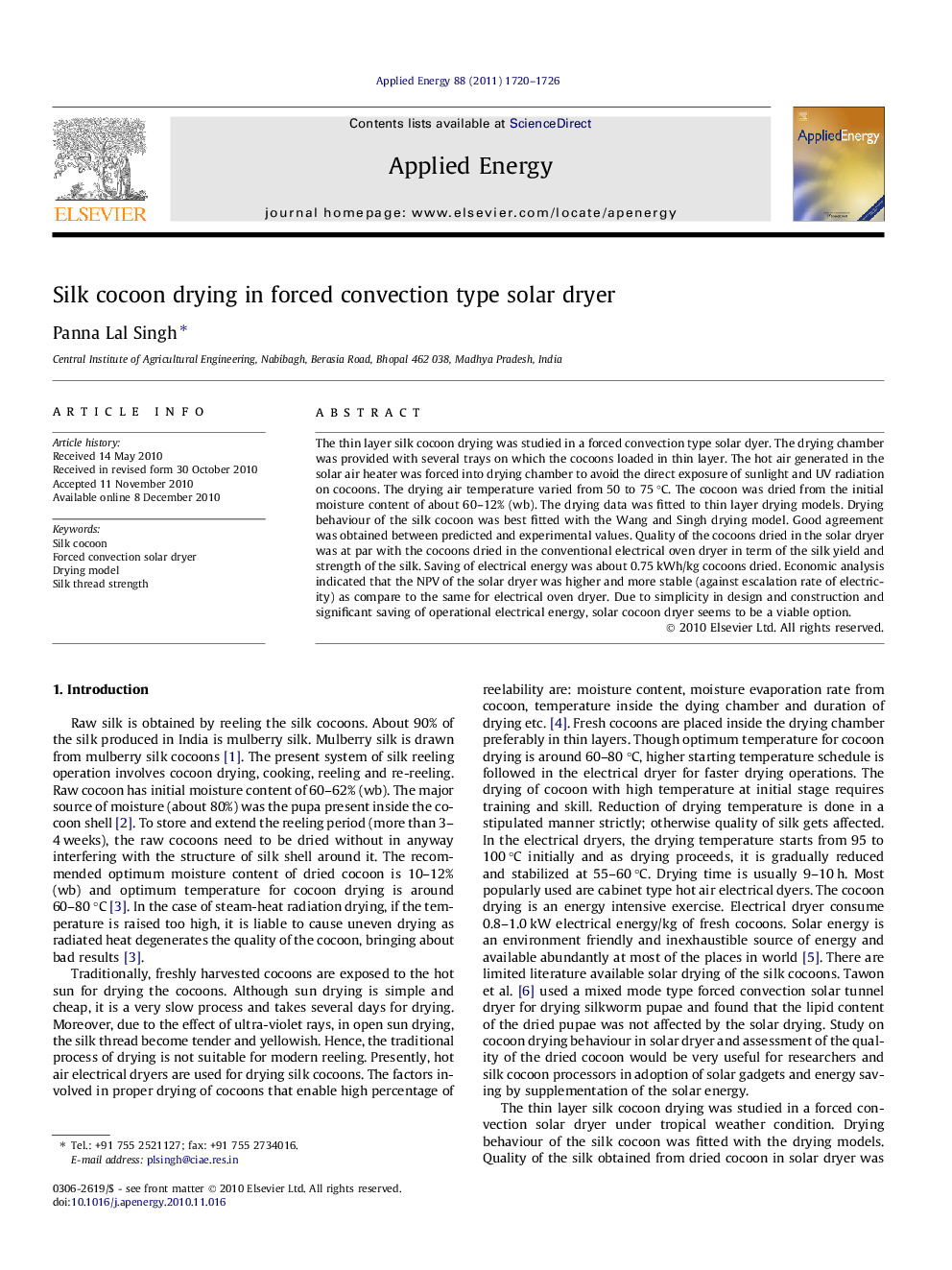| Article ID | Journal | Published Year | Pages | File Type |
|---|---|---|---|---|
| 243865 | Applied Energy | 2011 | 7 Pages |
The thin layer silk cocoon drying was studied in a forced convection type solar dyer. The drying chamber was provided with several trays on which the cocoons loaded in thin layer. The hot air generated in the solar air heater was forced into drying chamber to avoid the direct exposure of sunlight and UV radiation on cocoons. The drying air temperature varied from 50 to 75 °C. The cocoon was dried from the initial moisture content of about 60–12% (wb). The drying data was fitted to thin layer drying models. Drying behaviour of the silk cocoon was best fitted with the Wang and Singh drying model. Good agreement was obtained between predicted and experimental values. Quality of the cocoons dried in the solar dryer was at par with the cocoons dried in the conventional electrical oven dryer in term of the silk yield and strength of the silk. Saving of electrical energy was about 0.75 kWh/kg cocoons dried. Economic analysis indicated that the NPV of the solar dryer was higher and more stable (against escalation rate of electricity) as compare to the same for electrical oven dryer. Due to simplicity in design and construction and significant saving of operational electrical energy, solar cocoon dryer seems to be a viable option.
